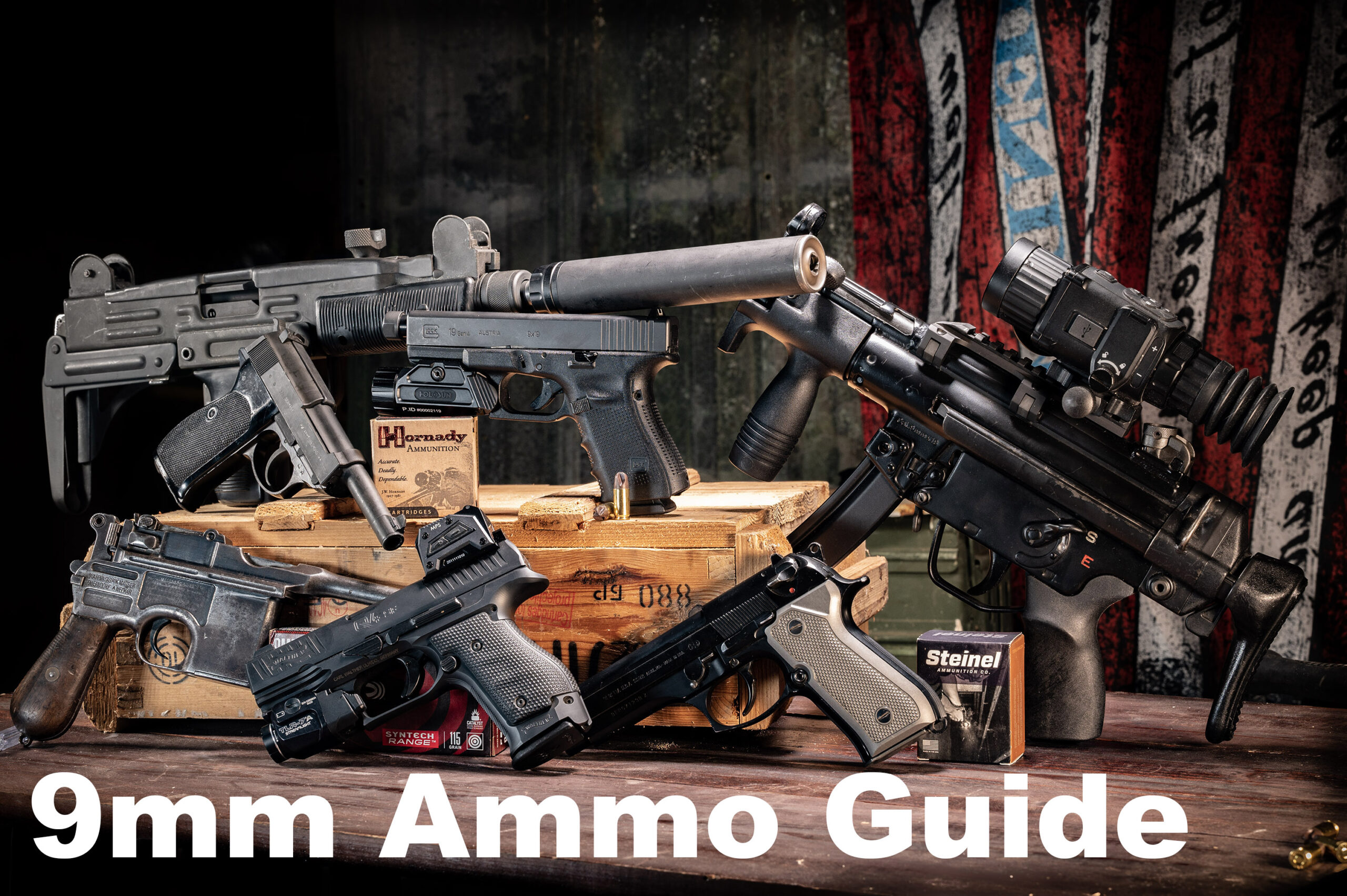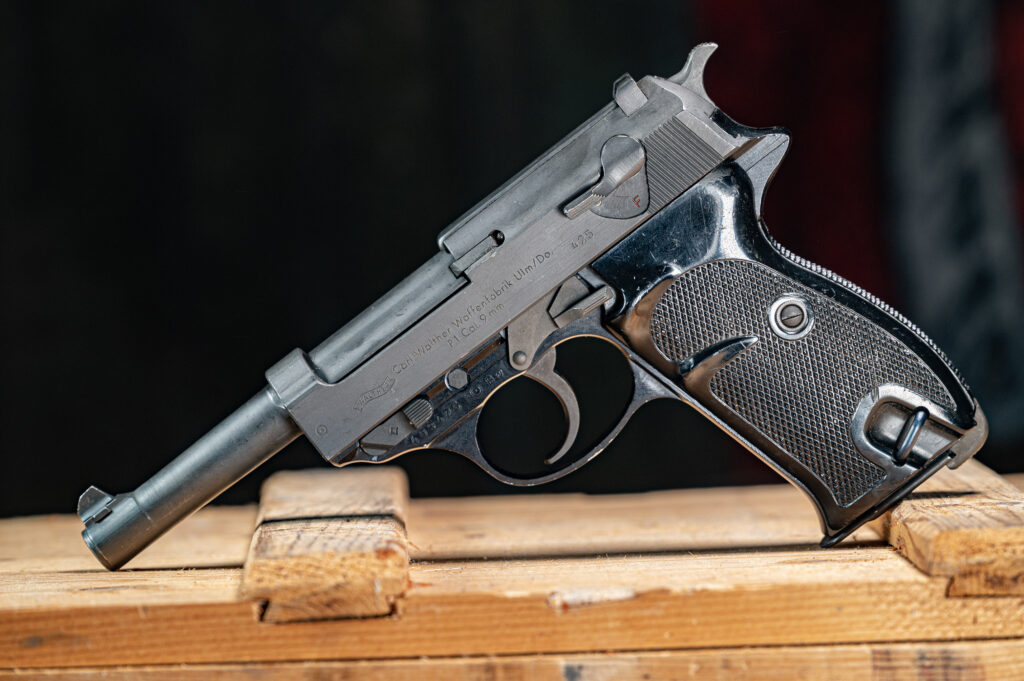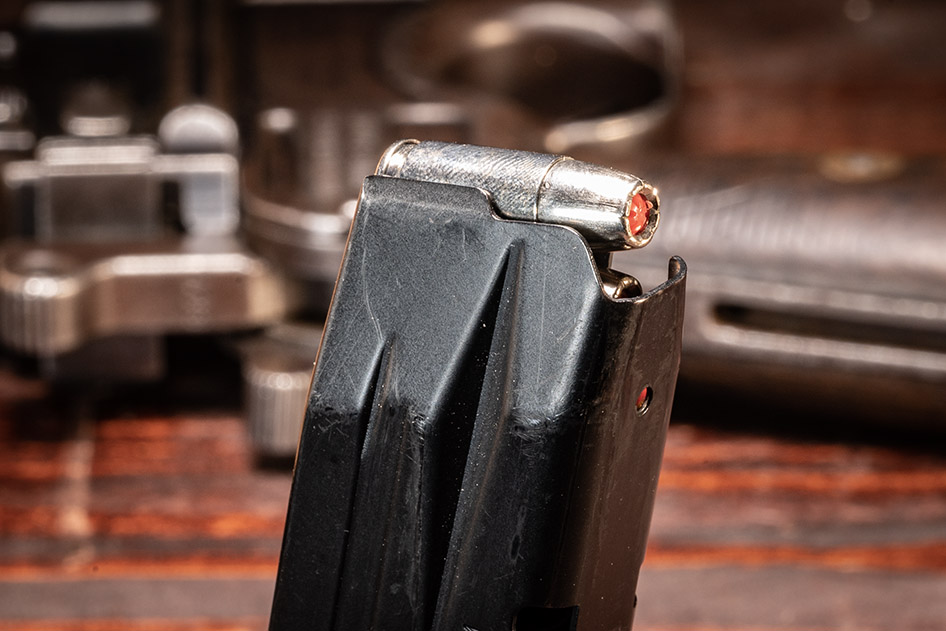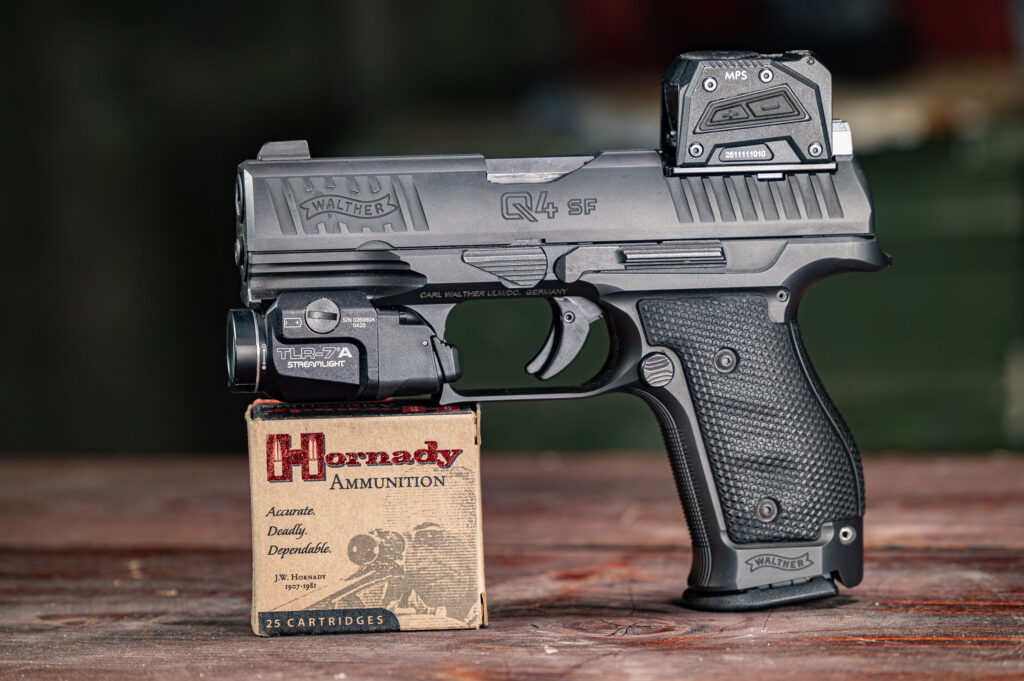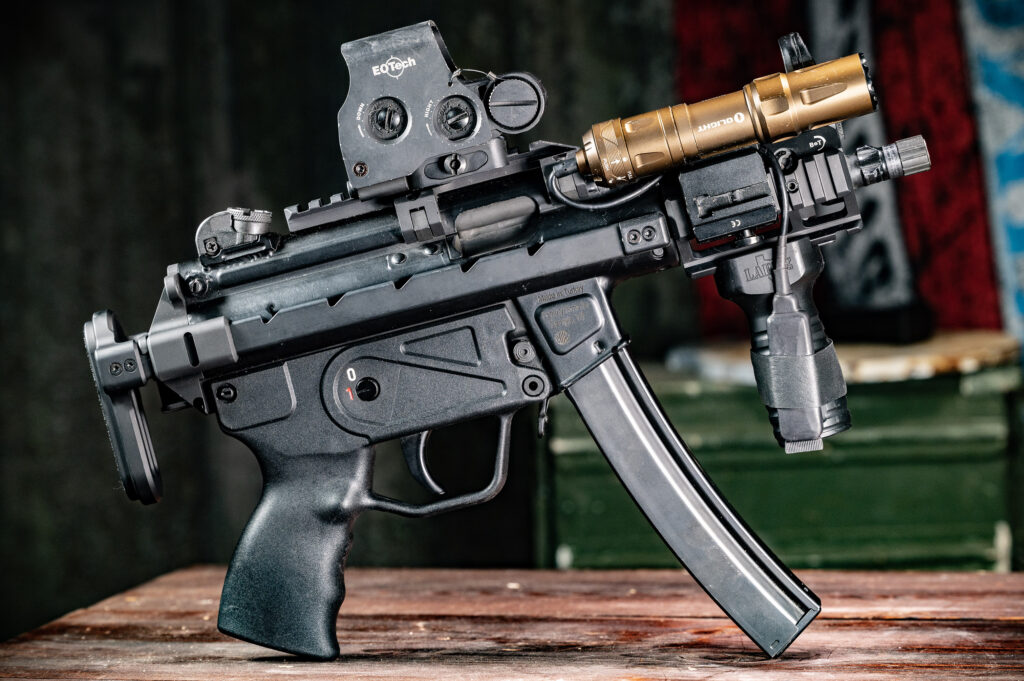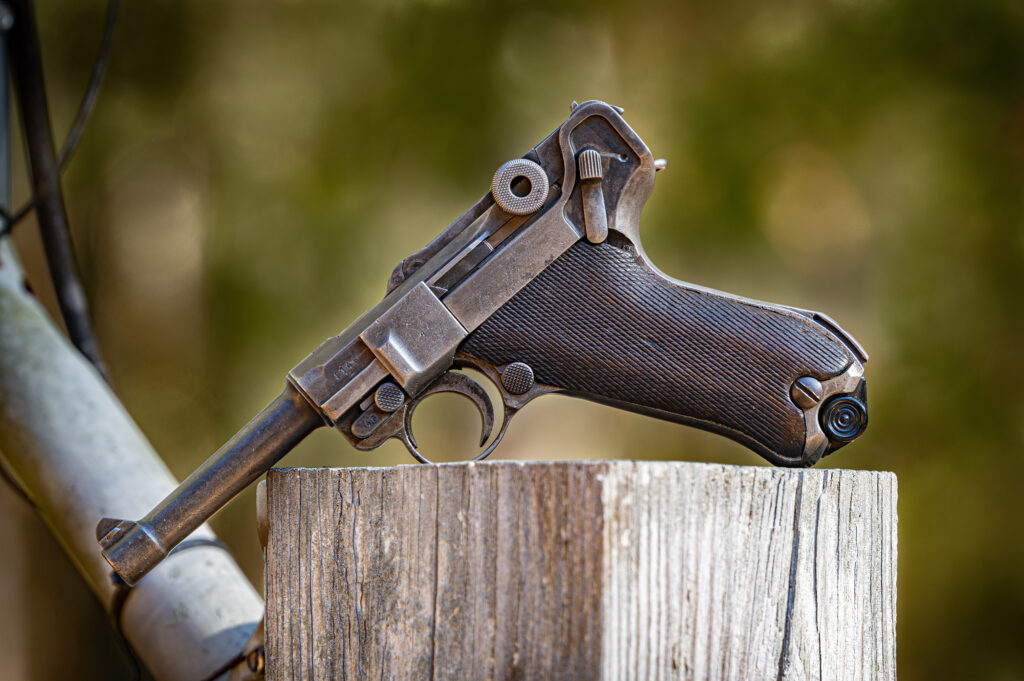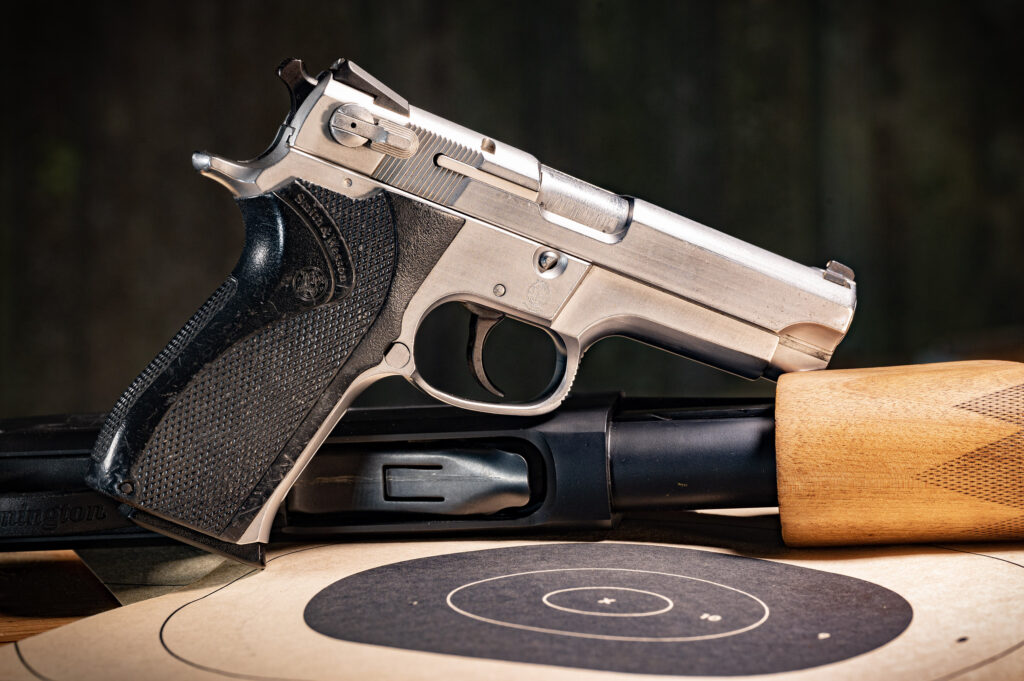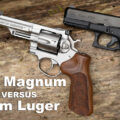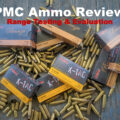A guide to common 9mm bullet weights and suggestions on what load is best for you.
9x19mm, 9mm para, 9mm luger, whatever you want to call it, has been around for a very long time. There are dozens of different loadings, but many shooters don’t even give the round a second glance when picking some up for plinking at the range. But they absolutely should; different projectile types and weights offer substantially different performance and perks depending on the shooter’s needs.
Thankfully, we’ve compiled a comprehensive list below to help guide you when purchasing some 9mm to ensure you get exactly the kind of performance you need and expect.
The Best 9mm Bullet Weight
Generally, shooters can’t go wrong with a basic 115-grain load when training. This ammo tends to be among the most affordable for 9mm shooters. 124-grain or 147-grain FMJ and TMJ offerings are also great general purpose loads for range time.
Many shooters will lean on a heavier hollow point bullet (147 grain) for self-defense. If you’re in that camp, it’s generally a good idea to match your training ammo weight to your self-defense ammo.
9mm Bullet Weight Options
New shooters may not be aware, we measure bullet weight in units called grain. Each grain of bullet weight is equal to one-7,000th of a pound.
60gr
Arguably the least common bullet weight for 9mm, 60-grain rounds are exclusive to frangible and lead-free loadings. These rounds will often struggle to knock over steel plates at competition because they’re so light.
The trade-offs are twofold: they’re vastly higher velocity than standard 115gr loads. If they’re frangible, they won’t penetrate hard surfaces as easily too.
If your host firearm was zeroed with heavier ammunition, your point of impact will be much higher with these rounds since some of them can travel at over 2,000 feet per second.
Felt recoil from these rounds tends to be extremely mild, and the recoil impulse itself is so light that some firearms might not cycle with them. So, before you buy a huge case of these rounds, be sure to test them in your personal firearm first.
115gr
115 grain 9mm ammunition is the most common loading available today. The vast majority of these rounds are FMJ and are often the least expensive option for plinking. If you want to blast paper or steel targets either at a shooting range or a competition, these are your go-to rounds. When fired from a 4.65-inch barrel, these rounds travel at around 1,180 feet per second. That’s fairly quick for a pistol round.
Interestingly, although these are the most common loading available today, they aren’t the original spec ammo used by the cartridge’s creator. That distinction falls to 124gr rounds.
124gr
The original projectile weight of the round when it was first introduced, the 124gr FMJ round is also NATO standard for sidearms and submachine guns. Depending on the exact load, these cartridges produce slightly more kinetic energy than standard 115-grain rounds. Some loading for the round will be slightly slower than 115gr rounds, while other, hotter loadings will be 1-200 fps faster. Check the ammunition box for full details.
In terms of felt recoil, there’s very little difference between these rounds and 115gr rounds. However, they perform better when fired through cover or when shot at more distant targets because they rely less on the velocity of the round and more on its weight.
Choose these rounds for shooting suppressed on a budget. Their decreased velocity makes them somewhat quieter. One thing to note is that if you zero your firearm with 115gr ammo, your point of impact will shift when firing these rounds. So, if you’re shooting in a competition, be sure to check your zero beforehand.
135gr
Only one major ammo-maker produces 135gr rounds: Hornady. They’re designed to strike a balance between velocity and projectile weight. And because these rounds are limited to plus power loads, shooters can expect increased felt recoil and better surface penetration.
These rounds are an excellent choice for shooters who think they might have to fire through automotive glass or want a little extra power without going subsonic. They’re also decent rounds for use with a suppressor. Though, their +p loading means you’ll still hear the supersonic crack as the round leaves your suppressor. Muzzle velocity from these rounds is roughly within one percent of a typical 115gr FMJ loading.
147gr
If you’re looking for heavy 9mm that’s still affordable, look no further than 147-grain rounds. These rounds are among the best for maximizing suppressor efficacy. Their subsonic muzzle velocity means shooters won’t hear the crack of the sound barrier being broken when fired from a suppressed firearm.
But just because they’re subsonic doesn’t mean they sacrifice terminal ballistics. Most 147gr 9mm still hits hard enough to penetrate thick clothing like leather jackets at mid-range. Plus, there are plenty of defensive loadings in this grain to make it a perfect self or home-defense round.
The only downside of the round is the cost. While there are more expensive subsonic rounds available, these rounds normally cost around 50% more than standard 115gr FMJ. But if you want to just hear the thud of the round hitting dirt from your suppressed MP5 or Glock 19, there’s no better choice for the money.
150gr/158gr
The ultimate round for shooting suppressed, these ultra-heavy rounds often have muzzle velocities below 900fps. Making them subsonic even out of longer carbine barrels.
These rounds are ideal for shooting both suppressed and for knocking down steel plates with authority. Where normal 115gr and 124gr 9mm might struggle to knock over a steel plate at 50 yards, these rounds will slam them down with ease.
The majority of these rounds are essentially what bullseye shooters refer to as wadcutters. In that, their nose of the round comes to a flat point. While this is great for getting nice big visible holes in paper, the best use of the rounds is defensive or suppressed use.
Cost and potential reliability issues are the downsides of running rounds this heavy. If your host firearm has a well-polished feed ramp or is simply designed from inception to use defensive ammo, the rounds will more than likely feed fine. But older designs like the P08 Luger will definitely struggle with them.
Most shooters like to run these rounds in carry pistols (once reliability is confirmed) and to show off how quiet their suppressor is. Personally, I keep a magazine of hollowpoint 158 grain rounds loaded in my bedside suppressed MP5 to make sure that the round don’t over-penetrate inside my house. I also like them because they’re so quiet out of my suppressed MP5 that in the event that I have to stop a threat in my home, I’ll be able to hear my wife and kids and maintain communication.
9mm History
9mm parabellum, literally “for war,” was invented in Austria by Georg Luger in 1901. It was based on the 7.65x21mm round Luger developed for his C93 Borchardt pistol. After the Borchardt pistol failed to attract any military contracts, Luger modified the design into the Parabellum pistol. It’s more commonly known today as the Luger. The design was solid, but it wasn’t until Georg chambered the gun in 9x19mm that the gun was formally adopted by the Imperial German Navy.
Compared to the common pistol cartridges of its day (like 32 ACP), 9mm was seen as high-power. It stretched the effective range of a handgun well beyond what was thought possible at the time.
Germany went on to chamber both its submachineguns like the MP40 and its World War 2 Walther P38 in the caliber where it saw great success in the conflict. But the real advantages of the round weren’t widely appreciated by American shooters until the age of the so-called “Wonder Nines.”
These full-sized handguns utilized a staggered-column magazine that could hold 14 or more rounds of ammo. Modern shooters take this for granted today, but prior to these handguns’ development, most pistols held fewer than ten rounds in a magazine. Yes, the Browning Hi-Power existed with its 13-round magazine, but it wasn’t until the 1970s, 80s, and 90s, that these handguns started to commercially take off after seeing widespread adoption among police departments.
Modern 9mm Handguns
Guns like Smith and Wesson’s Model 59, the Beretta 92, the HK VP70, and the Glock 17 showed that civilians and police/military personnel alike didn’t have to sacrifice capacity when selecting a sidearm.
Since then, shooters expect all full-sized and compact handguns to hold at least 15 rounds of 9mm. Even sub-compacts like the S&W Shield, Springfield Hellcat, and SIG P365 have pushed the magazine-capacity envelope even further. In fact, 9mm standard-capacity handguns represent the vast majority of pistols owned by Americans today. That’s precisely why this article was written.
Ultimately, choosing the right round for a shooter’s needs boils down to understanding what each type of round does. While an uninitiated shooter might choose a 158gr round based on the presumption that heaver = more powerful, that isn’t always the case. Plus, depending on what a shooter’s target is, faster rounds may be more advantageous. One thing is for sure: we live in the golden age of ammunition. There are dozens of choices for shooters to pick from. This allows us to match the perfect round to our desired purpose.
